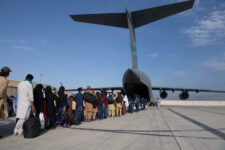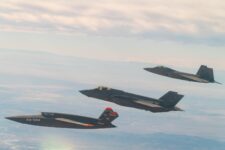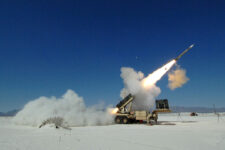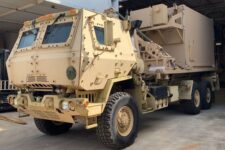
Yesterday, Joan Johnson-Freese argued that complicit and compliant media have helped the Pentagon overhype the threat of war in space — to the point that exaggerated US efforts to prepare for conflict might help start one. In today’s article, she outlines how US policy got to this point and how to correct it. — the editors
The Pentagon’s recent aggressive focus on fighting and winning a space war may make for great news stories and science fiction, but it’s lousy policy. While the situation in space has changed, in many ways for the worse, moving to an offensive strategy is a dangerous overreaction.
How did we get here? Both the tenor of public comments and the details of policies about space war shifted considerably after the 2014 Space Strategic Portfolio Review (SPR). Senior Pentagon officials argued that the strategic environment had changed, requiring a different approach to maintain the stability required by all space actors — most of all the US — to fully utilize their space assets. That’s right — as far as it goes: The environment has changed, but in more ways than considered by the narrowly focused SPR. The aggressive approach undertaken by the military rests on incomplete premises and carries a significant chance of being counterproductive if space stability is the goal.
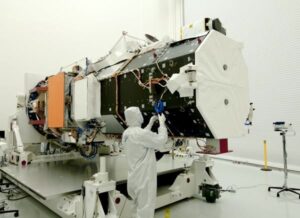 The most dramatic and disturbing change? In May 2013 China launched what it claimed was a science mission that nearly reached geosynchronous orbit, some 36,000 miles above Earth. That orbit, previously considered a sanctuary from threats because it was beyond the reach of any but the most advanced space players, houses key US space security assets. That Chinese action triggered the SPR, the results of which reached all the way to the White House — unusual for a subject often considered too technical and esoteric for the humanities majors in the West Wing.
The most dramatic and disturbing change? In May 2013 China launched what it claimed was a science mission that nearly reached geosynchronous orbit, some 36,000 miles above Earth. That orbit, previously considered a sanctuary from threats because it was beyond the reach of any but the most advanced space players, houses key US space security assets. That Chinese action triggered the SPR, the results of which reached all the way to the White House — unusual for a subject often considered too technical and esoteric for the humanities majors in the West Wing.
The 2013 launch was part of a steady increase in Chinese space capabilities over the past decade. China saw the advantages space provided the US military in Desert Storm and has also studied the economic, social and technical benefits of a human spaceflight program. China has initiated programs to pursue those benefits, all of which are dependent on access to space, guaranteed through the Outer Space Treaty, which both the US and China signed. Both of those countries, however, may see their access threatened by the US change of posture.
Russia has also been reviving its once powerful space program, testing (along with China) maneuverable satellites in low-Earth orbit, a feat only the United States could previously manage. Vladimir Putin’s regime reorganized the Russian Air Force and Russian Aerospace Defense Forces in 2015 to increase the bureaucratic clout of the Russian Space Forces. Putin has used US dependence on Russian transportation to the International Space Station as a pawn during tensions over Crimea. Together, this Russian resurgence and rising Chinese aspirations and capabilities have exposed sensitive nerves in the Pentagon and Intelligence Community.
The findings of the Space Posture Review have been bolstered and supplemented by the assumptions that the risk of escalation of conflict in space — potentially, escalation to the nuclear level — can be controlled. But limited information drawn from classified space war games suggests otherwise. It’s dangerous to assume that China or Russia would agree with us on what constitutes escalation and what constitutes proportionate response; that kind of understanding took decades to work out in the nuclear realm, and assessing which satellites are “strategic” or “tactical” targets is at least as complex. We can’t rely on other countries to understand US assumptions of how a limited space war might be fought.

SpaceX Falcon 9 launch
Commercial Space
The Russian and Chinese space postures aren’t the only changes in the space environment. After decades of wishing for a robust commercial space industry that does not depend on government contracts, it’s finally happening. Companies like Virgin Galactic and SpaceX are developing low-cost space transportation systems. Companies like Bigelow Space are developing expandable space habitats, and Deep Space Industries and Planetary Resources are working on plans and capabilities for space mining. These “New Space” companies may well facilitate the development of space much as the railroads helped develop the American West.
None of those significant space players — representatives of the commercial sector — was included in the SPR, which was led by the National Security Council. The review didn’t even include traditional civilian players like NASA Instead, the SPR included only the military and intelligence communities, and it focused almost exclusively on deterrence by punishment. A more inclusive consideration of the space environment might well yield a very different picture of the threats, risks and opportunities.
Unfortunately, the structural inertia that supports and, indeed, advocates, aggressive space postures requiring expensive weapon systems is strong. The aerospace military-industrial complex that President Dwight D. Eisenhower worried about is alive and well, staffed by individuals who thrive in the revolving door of corporations, the military, lobbying groups and think tanks. Congressional support for their efforts is easily garnered, as building hardware creates lucrative jobs and corporate profits, whereas diplomacy does not.
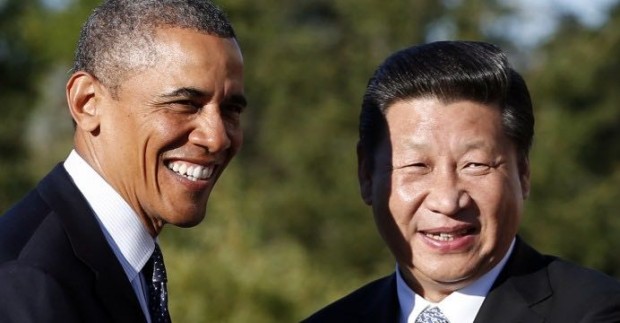
President Obama and Chinese President Xi Jinping
Try Diplomacy
But if the goal of US space security efforts is to maintain stability in space so it can fully utilize its space assets, then the time seems ripe for proactive diplomatic leadership and, at the same time, sustained strategic restraint. Otherwise, the US will be seen (not for the first time) as advocating a policy of do-as-we-say-and-not-as-we-do regarding pursuit of offensive space capabilities. The problem with restraint is that progress is slow and, as with nuclear deterrence, it’s hard to tell if you’re succeeding or not (unless things go apocalyptically wrong). Therefore, it is imperative that restraint be coupled with pro-active and aggressive diplomatic leadership and multi-tiered deterrence.
A key aspect of these diplomatic efforts must be our coming to terms with China. The Wolf Amendment that banned US-China bilateral space relations since 2011 has effectively promoted the notion of a US-China space race. It also, of course, propelled China to develop indigenous capabilities it might not have otherwise. With passage of the amendment, the US took careful aim and shot itself in the foot. There may still be an opportunity to use space as a bridge to better overall relations with China.
One model is how the US and Russia have managed to maintain a working relationship on the International Space Station during even the most tense of political times. It demonstrates the geopolitical value of cooperation when both parties have a vested interest in success. Both China and the US have Mars plans. A joint mission could serve as part of a larger “grand bargain” with China. The leadership aspects of the mission alone make consideration worthwhile.

Joan Johnson-Freese
While the drumbeat of Pentagon rhetoric regarding space warfare that originally accompanied the SPR has toned down since its release, the aggressive plans, development of capabilities and systems – and the resources committed to such – continue. Strategy requires keeping an eye on the goal. If space stability is the goal there is a serious misalignment between means and ends. Addressing that misalignment must be a US priority.
Joan Johnson-Freese, a member of the Breaking Defense Board of Contributors, authored the recently released Space Warfare in the 21st Century: Arming the Heavens. She is a professor of national security affairs at the Naval War College. The views presented are those of the author alone and do not represent the US government, the Defense Department or the US Navy.
No service can fight on its own: JADC2 demands move from self-sufficiency to interdependency
Making all-domain operations a warfighting capability means integrating, fusing, and disseminating a sensor picture appropriate for a particular theater segment, not all of them, says the Mitchell Institute’s David Deptula.



